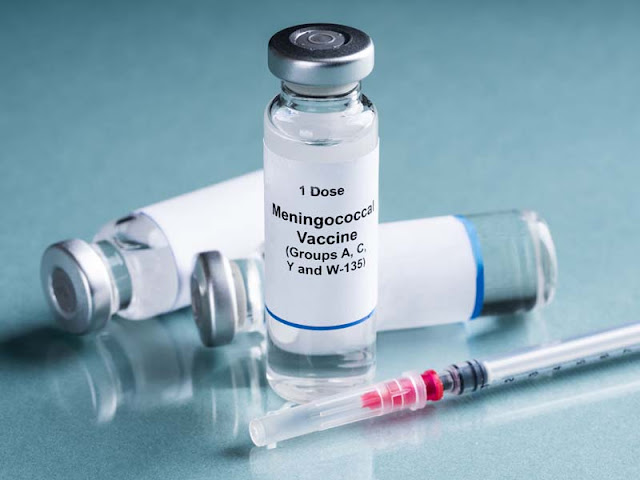Era of Genetic Medicine: Exploring Frontiers in Cell and Gene Therapies
 |
| Cell and Gene Therapy |
Cell and gene therapy involves making
genetic modifications directly or introducing new genes and genetic material
into patients for therapeutic effect. This emerging field holds immense promise
to treat a wide range of diseases from cancer to genetic disorders. In this
article, we will discuss the basics of cell and gene therapy, its potential
applications and future directions.
What is Cell Therapy?
Cell therapy involves
transplanting human cells, tissues or organs into patients to treat diseases.
The goal is to replace damaged or missing cells with healthy functioning cells.
Some examples of cell therapy include:
Stem Cell Therapy
Stem cells have the potential to
develop into many different cell types in the body. Stem cell therapy involves
transplanting stem cells into patients to generate new functioning cells and
replace damaged ones. This therapy is being explored for diseases like
leukemia, diabetes, heart disease and neurological disorders. Mesenchymal stem
cell therapy shows promise for conditions like spinal cord injuries.
Immunotherapy
This therapy boosts the body's
natural defenses by transplantation of white blood cells called lymphocytes.
Chimeric antigen receptor T-cell (CAR-T) therapy is a type of immunotherapy
approved for some blood cancers. It involves collecting patients' T cells,
engineering them to target cancer cells and infusing them back.
Organ Transplantation
Transplantation of organs like
heart, lungs, liver and kidneys from living or cadaveric donors is a
well-established cell therapy for end-stage organ failure. New tech like 3D
bioprinting may make more organs available in future.
What is Gene Therapy?
While cell therapy introduces new
cells, Cell
and gene therapy involves modifying or manipulating genes inside the
patient's cells and tissues. This is done using "vectors" to deliver
corrective genetic material (DNA or RNA) into target cells. The main approaches
include:
Viral Vector Gene Therapy
Viruses modified to carry
therapeutic genes are used as vectors. Adeno-associated virus (AAV) and
retrovirus are common viral vectors. Gene therapy using AAV vector has been
approved for rare genetic disorders.
Non-viral Gene Therapy
Methods not using viruses like
plasmid DNA, nanoparticles and electroporation are explored. These have
relatively low immunogenicity but low transfection efficiency.
Gene Editing
CRISPR-Cas9 system allows precise
editing of genomes by addition, deletion or alteration of genes. It could
correct mutations causing diseases. First CRISPR therapeutic was approved in
2021 for a rare blindness.
RNA Therapies
New RNA-based therapies like
antisense oligonucleotides and RNA interference can modify RNA to correct
genetic abnormalities post-transcriptionally. Some are approved for
neuromuscular disorders.
Potential of Cell and Gene
Therapy
Cell and gene therapies represent
a paradigm shift from conventional drugs. Some key advantages include:
- One-time administration
potentially providing lifelong benefits versus daily medication intake
- Ability to treat previously
untreatable conditions caused by single gene defects or cell loss
- Personalized treatment
targeting root cause at DNA/RNA level
- Novel approaches for cancer, heart
diseases, neurodegenerative disorders, rare genetic diseases
- Alternative to whole organ
transplants avoiding immune rejection and scarcity of donor organs
Applications in Various
Therapeutic Areas
Oncology
CAR-T therapies have shown
impressive response rates in blood cancers. Stem cell therapy boosts recovery
from chemotherapy and bone marrow transplants. Novel cancer vaccines are in
development.
Genetic Disorders
Gene therapies for rare genetic
conditions like SCID, retinal diseases have been approved. Others in
development target conditions like Duchenne Muscular Dystrophy, cystic
fibrosis.
Immunotherapy
Beyond cancer, cell therapies aim
to treat autoimmune diseases, transplant rejection and boost vaccine responses.
Mesenchymal stem cells suppress inflammation.
Neurological Disorders
Promising areas are Parkinson's,
spinal cord injuries, motor neuron diseases, retinal dystrophies. Stem cell
therapy may help conditions like stroke. Gene therapies correct monogenic
forms.
Cardiovascular Diseases
Areas of focus are heart disease,
congestive heart failure. Stem cells, gene therapies aim for cardiac
repair/regeneration. Treatment of genetic channelopathies as well.
Challenges and Future Prospects
While cell and gene therapies
represent a paradigm shift, several challenges must be overcome for their
widespread use:
- High Cost of Development: Gene
and cell therapies require complex manufacturing and regulatory oversight
driving up costs.
- Safety Concerns: Ensuring therapies
have no off-target effects or long-term safety issues through rigorous testing.
- Delivery and Standardization:
Improving targeted delivery to desired cells/tissues and developing consistent
reproducible technologies.
- Limited Applications: Most
focus on single-gene disorders; applicability needs widening.
- Immune Reactions: Avoiding host
rejection of foreign genetic/stem cell grafts is an area of concern.
As technologies advance in
directed molecular delivery, manufacturing, genome editing and materials
science, cell and gene therapies will become safer, more affordable and
scalable. Multidisciplinary collaborations between regenerative medicine,
material science and bioengineering hold immense future promise. Within next
few decades, cell and gene therapies are likely transform treatment of many
previously incurable diseases.
Get More Insights Here
https://captionssky.com/biologics-a-transformative-field-of-biotechnology/
https://www.ukwebwire.com/transforming-healthcare-in-cell-and-gene-therapies/



Comments
Post a Comment